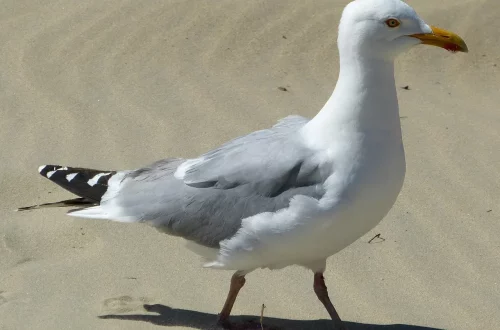
Understanding Why Your Dog Cries in Its Sleep and What It Means
Dogs are more than just pets; they are beloved family members who share our lives in countless ways. As companions, they exhibit a range of behaviors that both intrigue and perplex their human owners. One of the more curious behaviors is the way dogs sometimes cry or whimper in their sleep. This phenomenon can evoke concern, confusion, and even amusement among dog owners.
Understanding the reasons behind this behavior can provide insights into your dog’s emotional and psychological state. Just as humans experience dreams and the accompanying emotions, dogs too can engage in a rich inner world while they slumber. The sounds they make can be a reflection of their dreams, their physical sensations, or even their emotional well-being.
As we explore this topic, it is essential to recognize that each dog is unique, and their sleep behaviors may vary based on a multitude of factors, including breed, age, and individual temperament. Observing your dog during these moments can shed light on their experiences, but it’s also crucial to approach the subject with empathy and an understanding of canine psychology. The more we learn about our furry friends, the better we can care for them, ensuring they lead happy and healthy lives.
Understanding Canine Sleep Stages
To comprehend why dogs cry in their sleep, it’s essential first to understand the various stages of canine sleep. Just like humans, dogs go through different sleep cycles, primarily consisting of Non-Rapid Eye Movement (NREM) sleep and Rapid Eye Movement (REM) sleep. During these cycles, their brain activity changes, leading to various behavioral manifestations.
NREM sleep is characterized by deep rest, where dogs may not exhibit much movement or sound. However, during REM sleep, which is where most dreaming occurs, you might notice your dog exhibiting more pronounced movements, such as twitching, paddling their paws, or even vocalizing. This stage is crucial for memory consolidation and emotional processing, making it a vital part of your dog’s overall health.
While in REM sleep, dogs might experience vivid dreams that can evoke strong emotions, leading them to whimper or cry out. These vocalizations can range from soft whines to more pronounced howls, depending on what they might be experiencing in their dreams. Some studies suggest that dogs dream about their daily activities, interactions with their owners, or even their favorite toys and games.
It’s worth noting that the frequency and intensity of these vocalizations can vary greatly among individual dogs. Puppies, for instance, may dream more frequently as they process their new experiences, while older dogs might have different sleep patterns due to age-related changes. Understanding these sleep stages can help you interpret your dog’s nighttime sounds more effectively.
Possible Reasons Behind Crying in Sleep
When your dog cries in its sleep, it can stem from various underlying causes. One of the most common reasons is dream-related activity. As mentioned earlier, dogs experience REM sleep, where they engage in dream-like states. The content of these dreams can provoke emotional responses, resulting in sounds such as whimpering or barking.
Additionally, anxiety or stress can play a significant role in your dog’s sleep behavior. If a dog has experienced trauma, has separation anxiety, or is generally anxious, they may vocalize in their sleep as a response to these feelings. This is particularly true for rescue dogs or those with a history of instability. Their subconscious mind may replay stressful events during sleep, causing a reaction that manifests as crying or whining.
Moreover, health issues can also contribute to sleep disturbances. Conditions such as pain, discomfort, or illness can disrupt a dog’s sleep and lead to vocalizations. If your dog consistently cries in its sleep, especially if accompanied by signs of distress while awake, it may be wise to consult a veterinarian to rule out any underlying health problems.
Lastly, some breeds are more prone to vocalization than others. Breeds known for being particularly vocal, such as Beagles or Huskies, may be more likely to express themselves during sleep. Understanding your dog’s breed-specific characteristics can provide additional context for interpreting their behavior.
How to Respond When Your Dog Cries in Its Sleep
As a pet owner, witnessing your dog cry in their sleep can be concerning. However, it’s important to remember that this behavior is generally normal and often harmless. Here’s how you can effectively respond to your furry friend during these moments.
First, observe your dog closely. Pay attention to their body language and the context of their crying. Are they simply whimpering, or does it seem more intense? If your dog appears relaxed otherwise and the crying is brief, it may just be a part of their dreaming process. In such cases, it’s best to let them be and allow them to process their dreams.
If the crying is persistent or appears to be associated with distress, it might be helpful to gently wake your dog. Sometimes, a comforting touch or a soothing voice can help bring them back to the present and alleviate any anxiety they may be experiencing. However, avoid startling them, as this can cause confusion or fear.
Creating a calming sleep environment can also support better sleep quality for your dog. Ensure that their sleeping area is comfortable, quiet, and free from disturbances. A cozy bed, appropriate temperature, and a consistent routine can all contribute to a more restful sleep.
Lastly, if you’re concerned about your dog’s crying in sleep due to sudden changes in behavior or if it is accompanied by other worrying symptoms, don’t hesitate to seek professional advice. A veterinarian can provide insights and help address any potential health issues.
When to Seek Professional Help
While occasional crying in sleep is typically nothing to worry about, there are instances when it becomes necessary to consult a professional. If your dog exhibits excessive vocalizations during sleep or shows signs of distress upon waking, it may indicate underlying issues that need to be addressed.
Pay attention to any additional symptoms that may accompany the crying. If your dog seems lethargic, loses interest in activities they once enjoyed, or displays changes in appetite or behavior, these could be signs of anxiety, stress, or even physical discomfort. In these cases, seeking the guidance of a veterinarian is crucial.
Moreover, if your dog has a history of trauma or anxiety and their sleep behavior worsens, it may be beneficial to consult with a canine behaviorist or a trainer who specializes in anxiety-related issues. They can provide strategies and techniques to help alleviate your dog’s stress and improve their overall well-being.
In summary, while dogs crying in their sleep is often a normal behavior tied to their dreaming process, it’s essential to remain vigilant about any changes in their behavior. By understanding your dog’s needs and seeking help when necessary, you can ensure they lead a happy and healthy life.
*Disclaimer: This article is not intended as medical advice. If you have concerns regarding your dog’s health or behavior, please consult a qualified veterinarian.*




